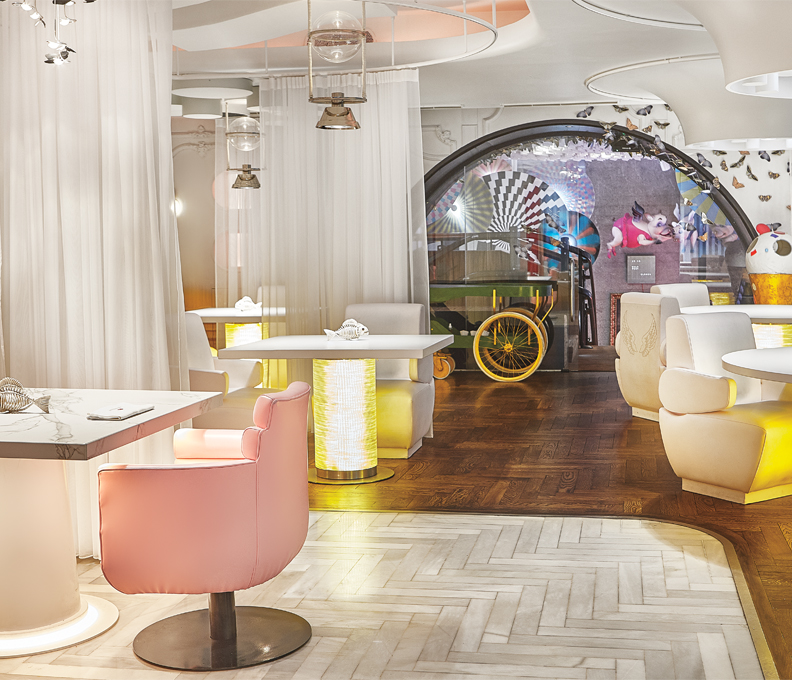Project Runway
Far from the ‘fly-in’ properties of yesteryear, airport hotels are a breed apart
March 29, 2020

For the most part, the reason exhausted road warriors have looked to airport hotels is convenience, but today’s runway-facing rooms may not be as hum-drum as you might remember. Meditation guides and farm-to-table dining tell another story. Today hotel brands proliferate around airports. But one in particular led the way.
Dubbed the world’s first “fly-in” hotels, Hyatt House kicked off the trend in 1957. Founder Jay Pritzker’s contract to purchase the Hyatt House at Los Angeles International Airport from Dutch businessman Hyatt von Dehn (hence the hotel company’s name today) was said to be scribbled on a hotel cocktail napkin. The convenience of Hyatt House LAX led to several other Hyatt House openings near airports along the West Coast.
Soon, other brands followed suit with hotels popping up around airports worldwide. Today, Hyatt House is no longer exclusive to airports. While it recently opened its 100th hotel at California’s San Jose International Airport, its suite-style accommodations with kitchens and living rooms designed for longer stays are located in downtown and suburban locales, too.
Convenience Is Key
From the humble beginnings of the first Hyatt House to today’s amenity-laden airport properties, a lot has changed. But proximity and efficiency are still the priority. For example, to reduce wait time, the Hyatt Regency San Francisco installed a location-tracking system for its airport shuttles to keep guests informed when the next one will arrive.
The Westin Detroit Metropolitan Airport, which is directly connected to the terminal, has its own TSA security checkpoint taking guests directly from the lobby to their gate. Other hotels connected to airports, like the recently opened art-laden Grand Hyatt at SFO and Grand Hyatt DFW are just a short walk from gates.
21st Century Personalization
Today’s traveler wants both convenience and personalization; bots that offer neither are a Millennial no-no. But if you’re too tired to exchange niceties with someone, robots, apps, and digital room keys activated via Bluetooth signal get you from plane to bed with minimal fuss. Chat features like those via the World of Hyatt app allow travelers to text specific requests (like extra towels or a particular view) to a real person without picking up the phone. Some hotels even offer robots to speed up the process.
World-class Dining
Regional culinary experiences aren’t forgotten either. Many hotels are partnering with well-known chefs or local farmers to elevate what’s on offer at the airport. At Hilton London Heathrow Airport Terminal 5, Indian restaurant Mr. Todiwala’s Kitchen is under the helm of celebrity chef Cyrus Todiwala.
Andaz Delhi operates a 24-hour, farm-to-table food hall where every possible menu item is locally sourced. Chefs regularly interview new purveyors, depending upon the season, to keep the menu fresh. Guests can even personalize their meal by snipping their own produce directly from refrigerated gardens lining the walls. Locals visit the food hall to purchase produce and ingredients, much like a modern-day farmer’s market, and guests can organize their own visit to some of the featured farms.
Environmental Awareness
The Grand Hyatt at SFO is on its way to becoming the world’s first Zero Net Energy (ZNE) airport campus by 2021. Photovoltaic roof panels, a complex water conservation program, and in-room (boxed) water and toiletry products are among the many elements required to achieve this goal.
Maintaining Life Balance
Fitness centers and spas are great, but well-being is top of mind for airport hotels, too. Hyatt’s Exhale spa brand streams self-improvement content to guest rooms of US Hyatt Place and Hyatt Regency properties. A soon-to-launch alliance with meditation brand Headspace will also deliver short meditations, soothing sleep sounds, wellness content, and even expert guidance from a former monk to in-house guests via the World of Hyatt app.
Airport hotels can deliver plenty of notable amenities plus greater convenience, and sometimes, a lower price.




